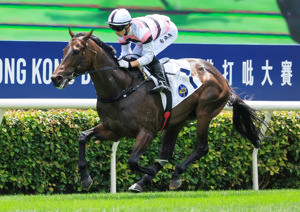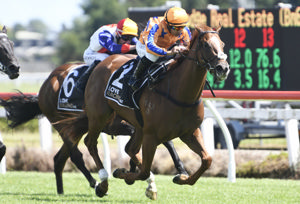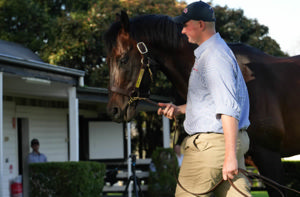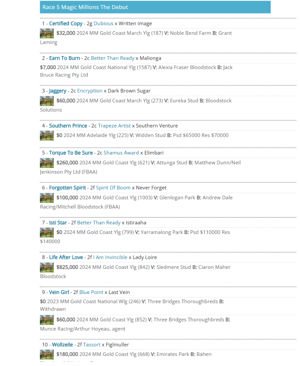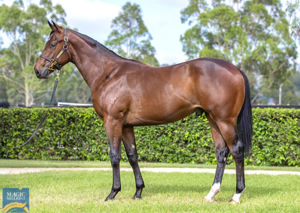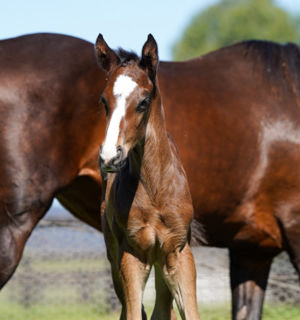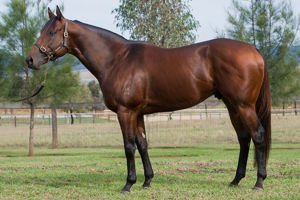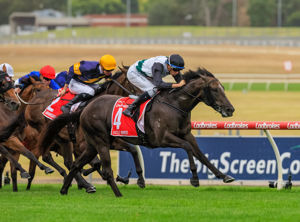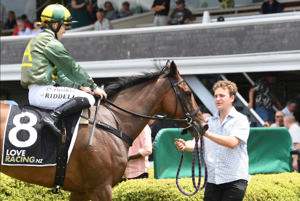Brian Russell, a journalist who has been writing extensively on thoroughbred breeding for 55 years, is heading off to pasture.
Now coming up to his 88th year and in deteriorating health, Brian is cutting back production of his email distributed publications Blood On The Track and Australian Thoroughbred following mail out of current editions.
Blood On the Track, a scaled down version of the Australian Thoroughbred sent to media outlets, ceases publication altogether and the Australian Thoroughbred hibernates until at least mid year. Brian Russell has plans for the future, if able, to research and write some history of Australian sires of last century and also review new sires.
Born in September 1930 at Trundle, a small centre west of Parkes in western NSW, six weeks before Phar Lap won the Melbourne Cup, and raised on his father's farm, Brian developed a love of the horse at an early age, but never dreamed he would end up spending over half a century writing about them.
After ten years on country newspapers, in 1960 he joined the editorial staff of the NSW Country Life, a now defunct National weekly stud stock newspaper, as a sub editor and in late 1962, following the death of their widely respected thoroughbred breeding reviewer Frank O'Loghlen (wrote under the name of Eurythmic) became the new producer of section.
After seven years in this position, he spent ten as Bloodstock Editor of very popular monthly magazine Racetrack, one which has now also ceased to be published. Struck down in 1972 by an illness that left him ever since dependent on walking aids, he went into semi retirement at Scone. Here in 1982 he launched a monthly magazine under the name of The Australian Bloodhorse Review, now conducted as Bluebloods by Andrew and Margaret Reichard, and in 1984 transferred to Richmond NSW. It can justifiably claim to be one world's leading show windows for thoroughbred breeding.
In the early 1990s, Brian Russell retired back up to the Upper Hunter and has been living with wife Deidree at Muswellbrook for the past quarter century. Here he developed the email publications Australian Thoroughbred (an extensive mailing list of over 3200 people in breeding and racing) and Blood On The Track.
Breeding reviewing has been a love of life for Brian Russell, providing him with the opportunity to visit and promote studs in NSW, Victoria, South Australia, Tasmania and southern Queensland. He has viewed such great sires as Star Kingdom, Wilkes, Better Boy, Showdown, Delville Wood, Biscay, Bletchingly, Vain, Marscay, Smokey Eyes and Danehill, to mention but a few.
His first big race meeting was Doncaster Day at Randwick on Easter Saturday 1948. There were 83,000 in attendance and the big race was won by The Diver, a son of The Buzzard (GB) trained by Queensland's iconic Tim Brosnan and strapped by his son Terry. The latter later became a very respected Sydney trainer.
From 1963 inclusive, Brian over the next quarter century rarely missed a Sydney Saturday or holiday meeting. He thrilled to the performances of Golden Slipper heroes Vain, Eskimo Prince, Baguette, Luskin Star and John's Hope and to the prowess of Gunsynd, Kingston Town, Octagonal, Lonhro and so many others that make racing a pinnacle of enjoyment.
In the 1960s, he attended five Melbourne Cups, stirred in particular by the two horse war between Light Fingers (the winner) and Ziema in the last 100 metres of the 1965 edition.
On the Sale front, until the end of last century, he promoted and attended all the majors at Inglis Newmarket centre at Randwick and in 1987 played a major role in the promotion of the inaugural Magic Millions Yearling Sale at the Gold Coast. That sale, one that had only 200 yearlings, produced one of its most important products, Snippets.
Brian in an official capacity promoted and covered his first yearling sale in 1963, the Inglis four day Easter sale, one which saw new national records set for aggregate (546,905 gns), average (1,031 gns) and most number sold at six figure prices, 1,000 gns to a top of 7,000 guineas.
The sale top price was paid twice for colts by Newhaven Park's champion sire Wilkes (Fr), one of them, a three-quarter brother to queen of racing Wenona Girl, won the Champagne Stakes and finished second to Eskimo Price in the Slipper under the name of Farnworth. A representative of the first crop of inaugural Slipper winner, Todman, Eskimo Prince was also in that catalogue, selling at 6,200 guineas. A guinea is the equivalent of two dollars ten cents.
The highest price at that 1963 sale should be less than the bottom price at the Inglis 2018 Easter yearling sale, but there has been a huge change in money value.
